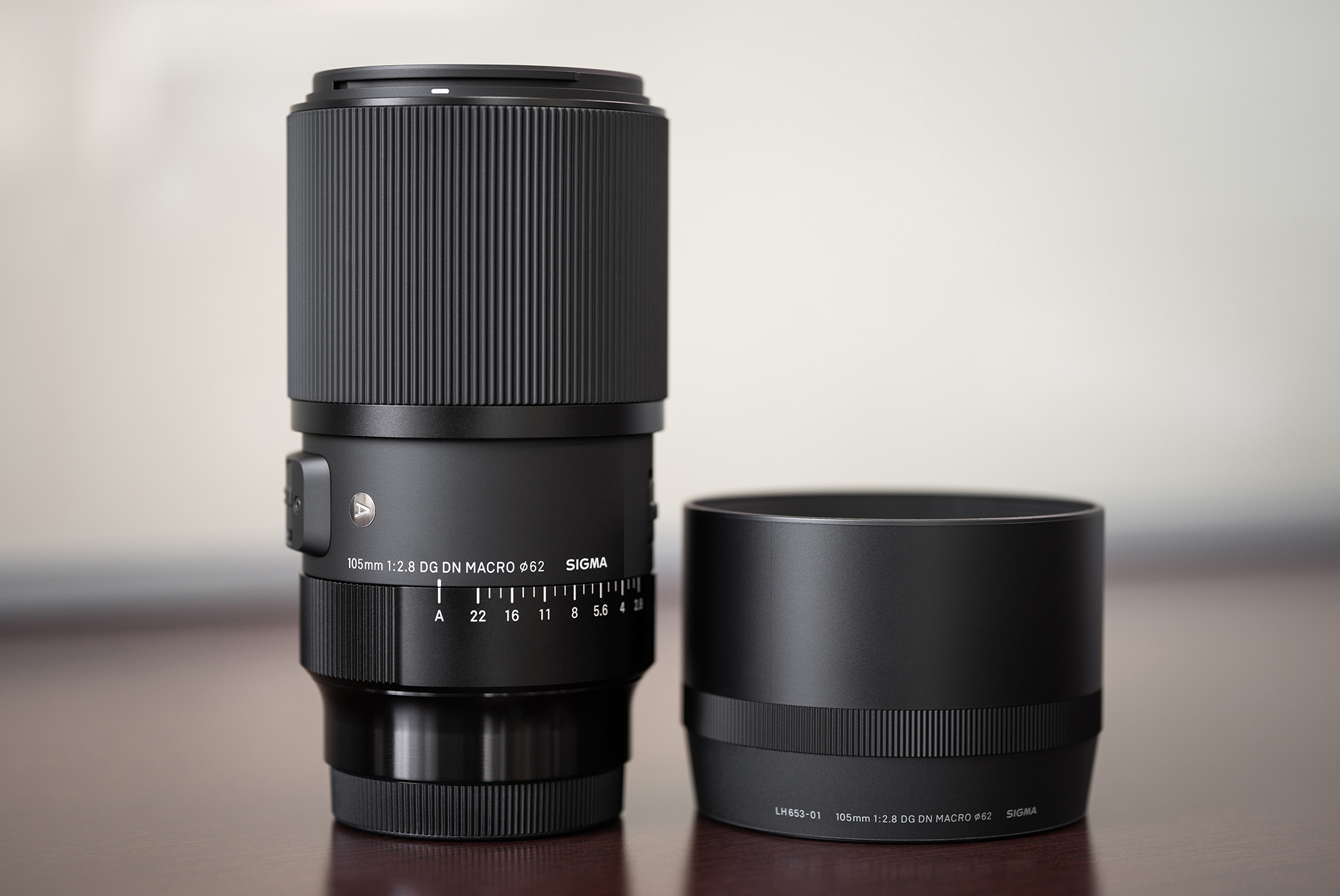SIGMA has a long history of great macro lenses. I’ve used and loved the 105mm F2.8 EX DG OS HSM MACRO, the 150mm EX DG and the 180mm EX DG since they were released. They’re each great lenses, but the latest release from SIGMA, the 105mm F2.8 DG DN MACRO | Art, is almost certainly the best macro lens the company has ever designed.
When SIGMA asked me to test out the new lens, I couldn’t resist. I set up shots in my dining room the day I received the lens, because it was pouring down rain outside. Once the weather cleared and the ground dried out a little, I went in search of what flowers might still be in bloom near me. A few of the local gardens did not disappoint. Neither did this new lens.

Getting the Most Out of Mirrorless
Before the new 105mm F2.8 DG DN MACRO | Art, there was a gap in macro lens options for mirrorless cameras. The 105mm EX would fit on a Sony camera with the use of an adapter, but it couldn’t take advantage of all the features of the camera body. SIGMA then released the 70mm F2.8 DG MACRO | Art, which is available in native Sony E-mount. 70mm is a great focal length for a macro lens when shooting larger subjects or at less than maximum reproduction. It’s perfect for wedding rings, large flowers and the like, but the working distance can be a little tight when shooting at 1:1. I still wanted a slightly longer focal length, and I must not be alone… SIGMA has responded with this incredible new lens, designed specifically for mirrorless cameras.
For a lot of what I shoot, working distance makes all the difference in the world. A greater distance from the front element of the lens to the subject can make or break a shot, particularly when a bug you’re photographing doesn’t want you to get any closer. The new 105mm F2.8 DG DN MACRO | Art focuses internally, providing a working distance of just 5.55 inches, more than half that of the 70mm MACRO Art. When shooting up against a glass terrarium, that greater distance plus a front element that doesn’t extend can mean the difference between nailing the shot and missing it entirely.
This new lens sets a new standard for optical performance in a macro lens, with sharpness comparable to the best Art primes from SIGMA. That alone is an amazing accomplishment. The bokeh is as beautiful as we have come to expect from a SIGMA Art lens. Chromatic aberration is virtually nonexistent. The focus speed and accuracy on a Sony A7R III was incredible, snapping from close to far and back with ease. It handled exotic frogs in a dark environment that required ISO 3200-6400, with no issues at all.
Signature SIGMA Construction
SIGMA’s lens designers have even managed to make the new 105mm F2.8 DG DN MACRO | Art smaller than its EX cousin. It’s very similar in size and weight to the 70mm DG MACRO Art, but with the added benefit of greater working distance and an aperture ring, which can be de-clicked by a switch on the side, to allow complete control over exposure and depth of field for macro or video work. The aperture ring can also be locked in the “A” position for auto setting to let the camera take control, or the F2.8-F22 aperture range for full manual control.
The lens looks and feels great in the hand – rugged yet light and compact. The lens hood is solid and locks on tight. The focus ring is large and perfectly placed. Using the focus-by-wire HSM, coupled with the Sony A7R III, I could make big focus changes quickly, and tiny changes precisely. In addition, there’s the usual AF/Manual focus mode switch (allowing quick changes when the situation dictates), a Focus Limiter switch, as well as an AFL button on the side that can lock the autofocus or be programmed through the camera body for alternative uses. Plus, the dust and splash-proof construction makes the 105mm F2.8 DG DN MACRO | Art perfectly suited for shooting in less-than-ideal circumstances, which always seem to arise when least expected.
The Ideal Focal Length for Macro
During presentations, classes and workshops, I’m frequently asked how to achieve greater than 1:1 reproduction when shooting extreme macro. It usually requires a complicated setup or compromises in equipment. For L-Mount cameras like the SIGMA fp, the 105mm F2.8 DG DN MACRO | Art was designed to work with SIGMA’s new 1.4x TC-1411 and 2x TC-2011 teleconverters, without decreasing the working distance! These combos can then achieve 1.4:1 and 2:1 reproduction ratios while still being just 5.5 inches from the subject.
I was absolutely delighted with this new macro lens. The designers have clearly considered each and every detail thoroughly, solving every issue and creating the best macro lens I’ve ever used. It was such a pleasure to shoot with and to see the images this lens can produce. I’ve always considered 105mm the best focal length for an everyday macro lens, and this is now the one to get. Whether you want to shoot flowers or rings, people or bugs, collectables or everyday objects, the SIGMA 105mm F2.8 DG DN MACRO | Art is the lens for you!
See more examples shot with the SIGMA 105mm F2.8 DG DN MACRO | Art lens in our Early Impressions blog post!